It is a common practice for business organizations to utilize repeat business processes. It is important to be able to start quickly with repetitive workflows. For this reason, Microsoft Azure now provides support for templates in Azure Data Factory. Templated setups improve developer productivity along with reducing development time for repeat processes.
The new feature enables a template gallery that has a variety of use-case based templates, data movement templates, SSIS templates or transformation templates that enable hands-on experience building data factory pipelines.
Get started with Azure Data Factory templates
Getting started is simple: click Create pipeline from template on the Overview page.
or Pipeline from template on the Author page in your data factory.
Select any template from the gallery and add the necessary actions.
It is also possible to create new connections or compute when doing the template inputs.
Clicking on Use this template takes to the validation output that guides through filling in the properties required to run the pipeline.
Template functionality also provides the possibility to save existing pipelines as templates.
GIT integration (Azure Dev Ops GIT or GitHub) in the data factory is required to be able to save existing pipelines as templates.
The template is saved in the GIT repo under the templates folder.
The template can be seen in the Templates section of the resource explorer.
The new template is also available in the My templates section in the template gallery.
The newly created template generates two files in the repository – an ARM template and a manifest file. The ARM file contains all the information about the data factory pipeline while the manifest contains the template metadata.
Further reading
- find more information about templates in Azure Data Factory in the documentation
- get started building pipelines
- further reading in Azure Data Factory forum


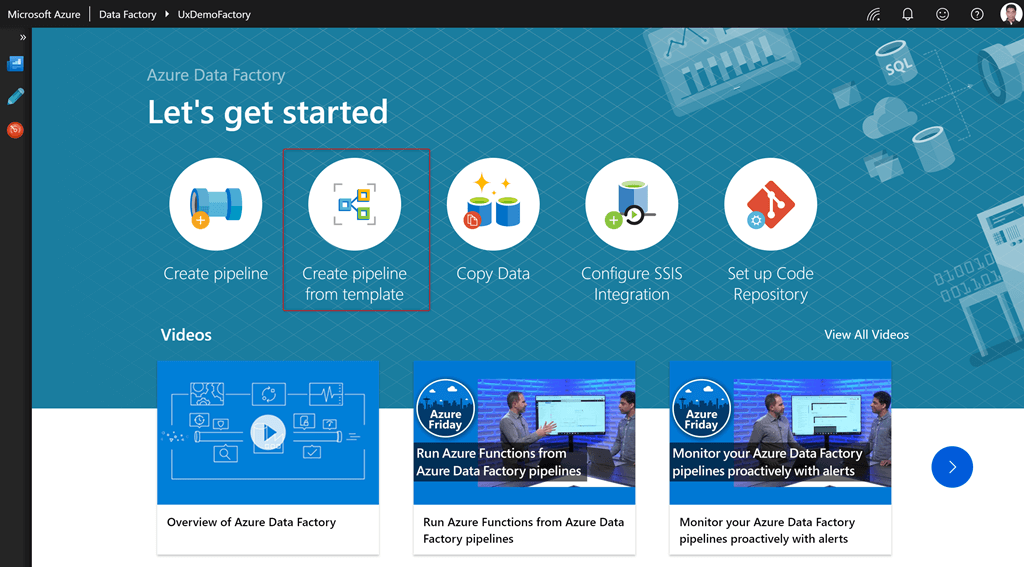



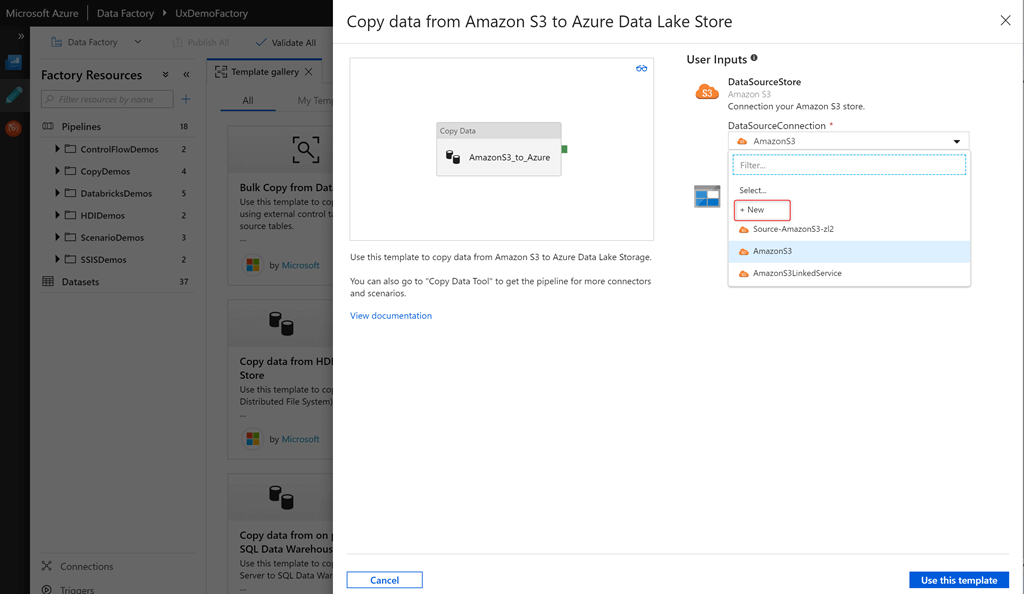
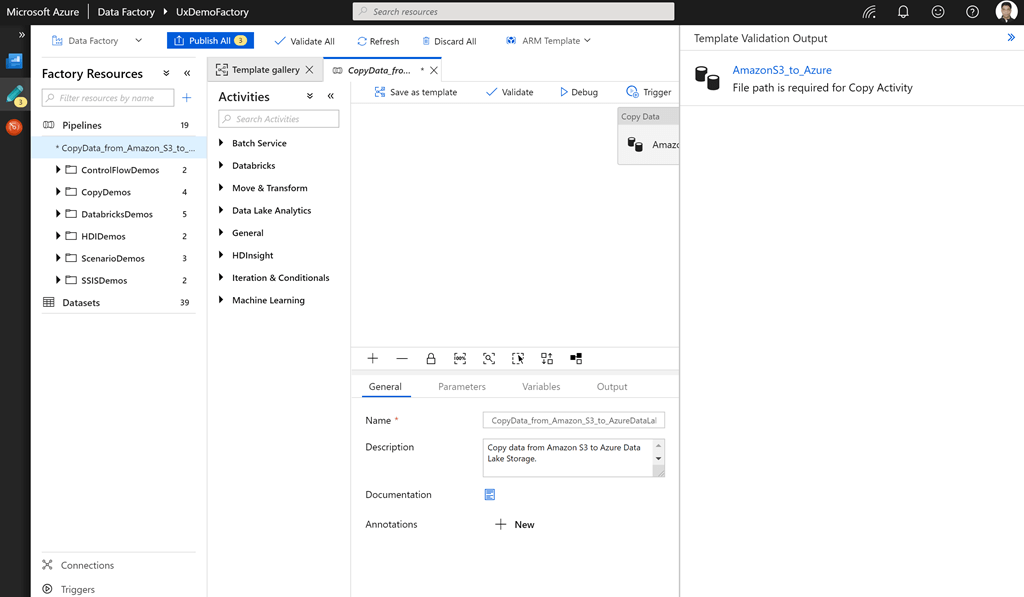
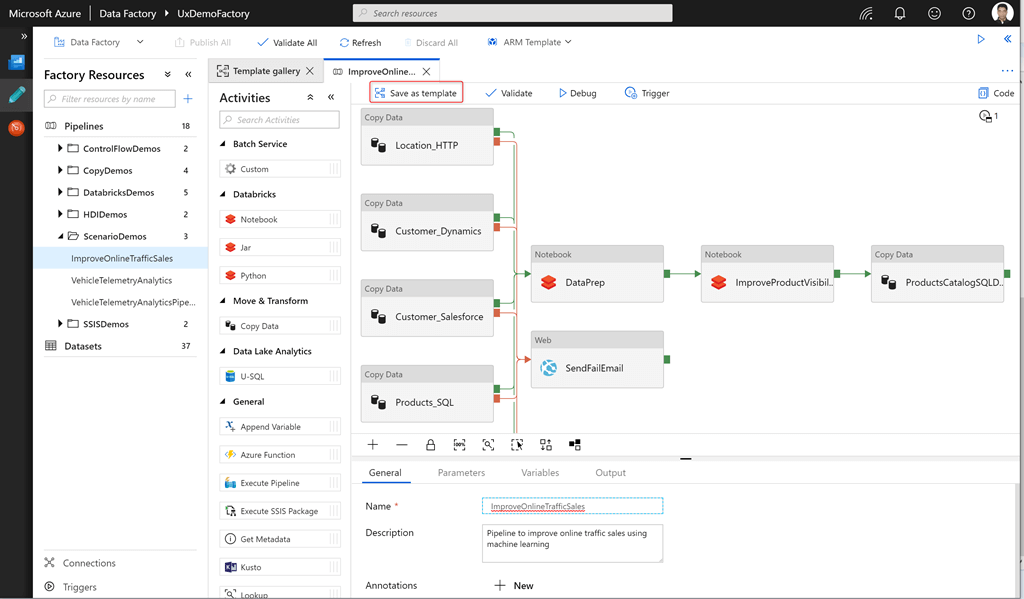
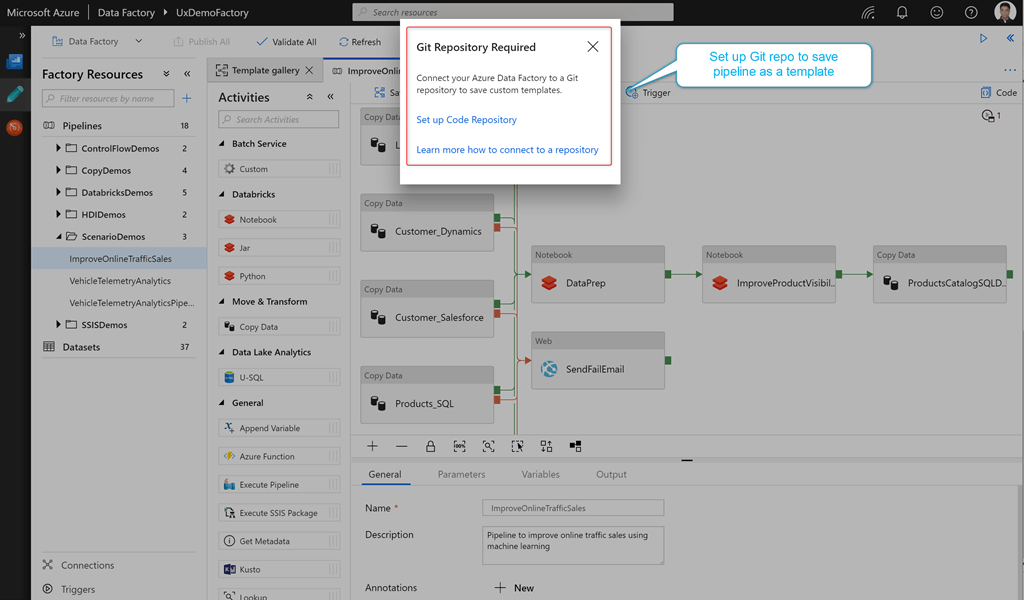

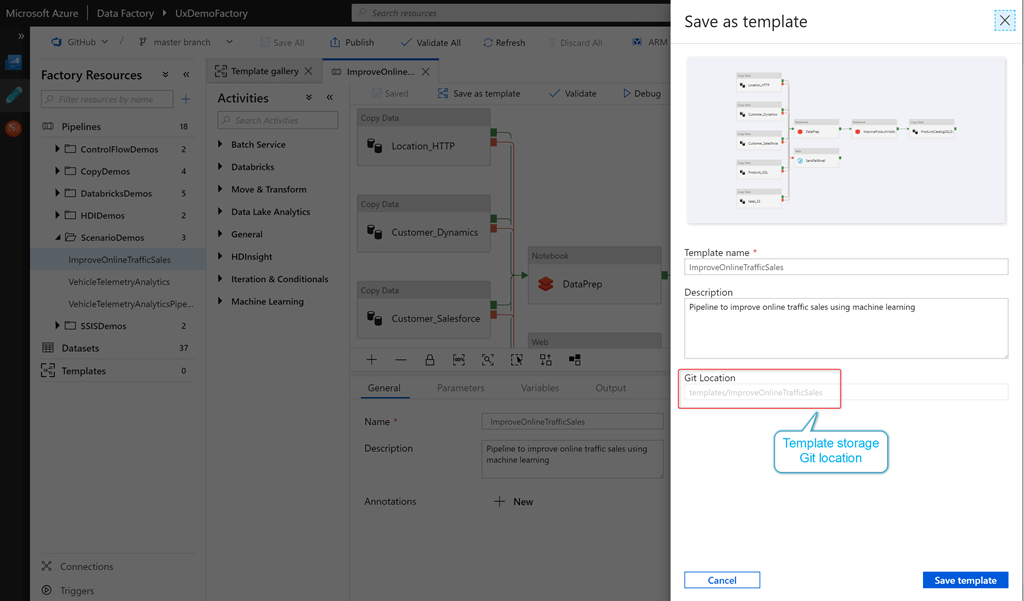



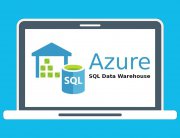



Leave A Comment